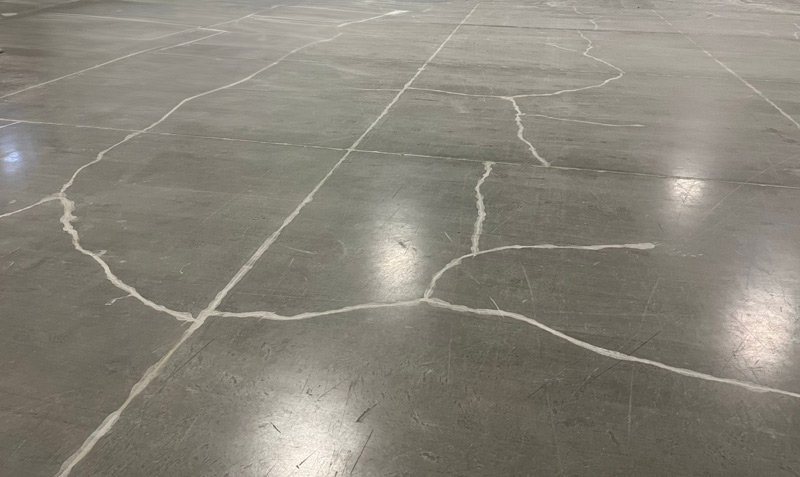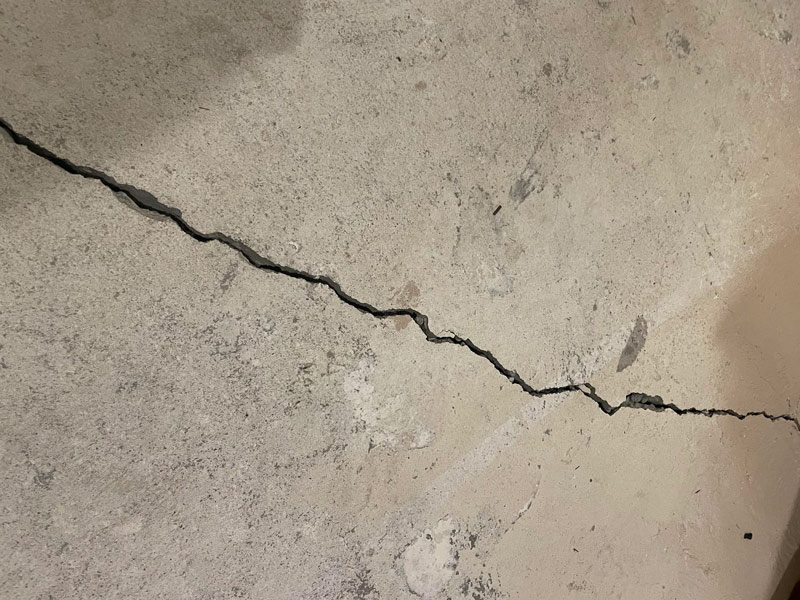Easy and Effective Ways of Fixing Cracks in Concrete.
Are cracks in your concrete driving you crazy? If so, you’ve come to the right place. In this guide, Diamond Grind will walk you through easy and effective ways to go about fixing cracks in concrete surfaces.
Whether you’re dealing with hairline cracks or larger fissures, this article will give you the knowledge and techniques to address the problem head-on. No more wasting time and money on temporary fixes. With Diamond Grind’s expert advice, you’ll be equipped to tackle these repairs yourself (or contact us for professional help), saving both time and money.
From identifying the type and cause of the crack to selecting the right repair method and materials, this guide covers it all. We will discuss patching compounds, epoxy injections, and other professional-grade products to ensure a durable and long-lasting repair.
Don’t let those cracks ruin your concrete surfaces’ look and structural integrity any longer. Follow Diamond Grind’s guide and get ready to restore your concrete to its former glory.
Common Causes of Concrete Cracks
Concrete cracking can occur for various reasons, and understanding the cause is the first step towards effective repair. One common cause is shrinkage, which happens when the concrete dries and contracts. Another common cause is settlement, when the soil beneath the concrete compresses and causes the surface to crack. Other causes include freeze-thaw cycles (generally not an issue for us here in NSW), heavy loads, and poor construction practices.
Identifying the cause of the crack will help you determine the appropriate repair method. For example, a simple patching compound may be sufficient if the crack is due to shrinkage. However, if the crack results from settlement, a more extensive repair may be necessary to address the underlying soil issue.
Types of Concrete Cracks
Concrete cracks can vary in size and severity, and it’s essential to understand the different types to determine the best course of action. Hairline cracks are thin and shallow, typically caused by shrinkage. These cracks are usually superficial and can be easily repaired using a patching compound.
Larger cracks, such as settlement or structural ones, require more attention. Settlement cracks are wider and deeper, often caused by soil movement or inadequate support. Structural cracks, on the other hand, indicate a more significant issue with the integrity of the concrete and probably require professional intervention.
By identifying the type of crack you’re dealing with, you can choose the appropriate repair method and materials to ensure a successful repair.
Assessing and Diagnosing Concrete Cracks
Before jumping into the repair process, it’s crucial to properly assess and diagnose the concrete cracks. Take a close look at the cracks and consider their width and depth. This information will help determine the appropriate repair method.
Additionally, consider the location and surrounding conditions. Are the cracks in a high-traffic area? Are they exposed to extreme weather conditions? Understanding these factors will help you choose the materials and techniques for a long-lasting repair.
If you’re unsure about the severity or cause of the cracks, it’s always a good idea to consult a professional. If you are in NSW, then by all means, give Diamond Grind a call. We can provide expert advice and guidance based on our years of experience and knowledge.
DIY Methods for Fixing Cracks in Concrete that are small
If you’re confident in your DIY skills, fixing small cracks in concrete can be quite straightforward. One commonly used method is using a patching compound. These compounds are readily available at most hardware stores and can be applied directly to the crack. There are several products on the market, so be sure to follow the manufacturer’s instructions for the best results.
To apply the patching compound, always start by cleaning the crack with a wire brush or high-pressure water. This will remove any loose debris and ensure the compound adheres properly. Once the crack is clean and dry, apply the compound, making sure to fill the crack completely. Smooth out the surface and allow it to cure as per the manufacturer’s instructions.
A concrete sealer can be an effective solution for hairline cracks. Apply the sealer directly to the crack, following the manufacturer’s instructions. This will help prevent water penetration and further damage.
Professional Methods for Fixing Larger Cracks in Concrete
A professional concrete repair contractor may be necessary for larger cracks or more severe damage. Professionals have the expertise and specialised equipment to handle extensive repairs and ensure the structural integrity of the concrete. At Diamond Grind we specialise in concrete floor repairs and preparation for all types of floor surfaces
One standard method for fixing larger cracks is epoxy injection. This technique involves injecting epoxy into the crack to bond and strengthen the concrete. Epoxy injections are suitable for structural and non-structural cracks, providing a durable and long-lasting repair.
Another professional method is the use of polymer-modified cementitious overlays. These overlays can be applied to the entire surface, effectively concealing and repairing larger cracks. The overlays provide a new and improved surface while addressing the underlying crack issue. Diamond Grind specialises in this type of repair.
Preventing Future Concrete Cracks
While repairing existing cracks is important, it’s equally crucial to take preventive measures when installing concrete so as to avoid future damage. Here are some tips to help prevent concrete cracks:
- Properly prepare the subgrade: Ensure the soil beneath the concrete is properly compacted and stable. This will minimise settlement and shifting, which can lead to cracks.
- Control moisture: Proper drainage and waterproofing techniques can help prevent water accumulation and subsequent damage to the concrete.
- Control curing conditions: To minimise shrinkage cracks, follow proper curing techniques, such as applying a curing compound or using wet curing methods.
- Avoid heavy loads: Minimise excessive weight or force on the concrete surface to prevent cracking.
- Reinforce the concrete: Consider using reinforcing materials like rebar or wire mesh to strengthen the concrete and prevent cracks from forming.
By taking these preventive measures, you can significantly reduce the likelihood of future concrete cracks and prolong the lifespan of your surfaces.
Tools and Materials Needed for Concrete Crack Repair
You’ll need a few essential tools and materials to repair concrete cracks successfully. Here’s a list of the most commonly used items:
- Wire brush or high-pressure water: Use these to clean the cracks and remove loose debris.
- Patching compound: Choose a patching compound suitable for your specific needs for small cracks.
- Trowel: To apply the patching compound smoothly and evenly.
- Concrete sealer: For hairline cracks, select a concrete sealer that provides adequate protection.
- Epoxy injection kit: An epoxy injection kit will be necessary if dealing with larger cracks.
- Polymer-modified cementitious overlays: Consider using overlays for extensive repairs and surface restoration.
- Safety equipment: Gloves, goggles, and a dust mask to protect yourself during the repair process.
Readily available tools and materials will ensure a smooth and efficient repair process.
Hiring a Professional Concrete Repair Contractor
While DIY methods can be effective for minor cracks, hiring a professional concrete repair contractor is often the best choice for more extensive or complex repairs. Diamond Grind has the knowledge, experience, and specialised equipment to handle a wide range of concrete issues.
By carefully selecting a reputable contractor, you can have peace of mind knowing that your concrete repairs are in capable hands.
Maintaining and Preserving Your Concrete Surfaces
Fixing cracks in concrete can be frustrating and unsightly, but with the proper knowledge and techniques, they can be effectively repaired. By understanding the causes and types of cracks, assessing and diagnosing the damage, and selecting the appropriate repair method, you’ll be well-equipped to restore your concrete surfaces.
Whether you tackle the repairs yourself or hire a professional, remember to take preventive measures to avoid future cracks. Proper preparation, reinforcement, moisture control, and load management are key to preserving the integrity of your concrete.
Maintaining and preserving your concrete surfaces enhances their appearance and ensures their longevity. Follow Diamond Grind’s guide and say goodbye to those pesky cracks once and for all!

